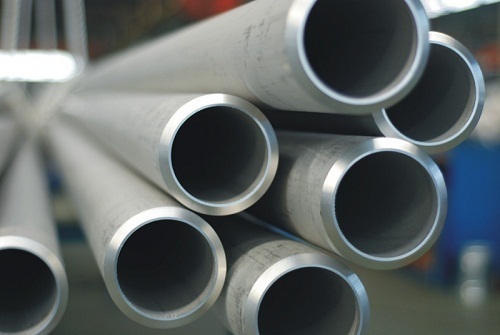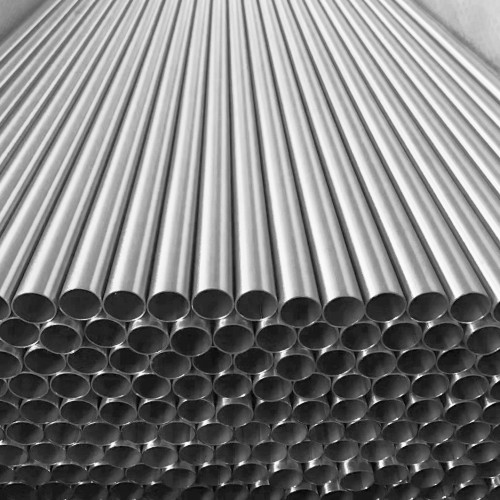Stainless Types & Grades
Overview
JSL Global deals in marketing & distribution of stainless steel in 200 series, 300 series (including SS 304, SS 316), 400 series and duplex stainless steel grades. The product range includes Stainless Steel Coils, Stainless Steel Plates, Stainless Steel Bars, Stainless Steel Sheets, Precision Strips, and Blade Steel.
Stainless Steel
Stainless steel is one of the most versatile metals today. The use of stainless steel is in the projects of all sizes – from a watch to building a bridge. Stainless steel has been one of the most sustainable alloys in the recent times. The ‘passive’ nature of stainless steel makes it the next generation material. Stainless steel comprises minimum of 10.5% chromium which gives it a unique combination of lustre and durability.
Types of Stainless Steel
Stainless steel can be divided into four groups based on their crystalline structure
Ferritic
Austenitic
Duplex
Martensitic

Ferritic Stainless Steels
Ferritic stainless steel is plain chromium (10.5-28%) alloy, usually with low carbon content. It is magnetic and ductile, and as the name suggests it has high resistance to corrosion and oxidation. They are generally resistant to stress corrosion cracking. However, its welding tendency has some limitations, which restrict its use to thinner gauges. 3CR12, a special grade, which is developed and patented by Columbus Stainless, largely overcomes this problem. These grades can be buffed in order to provide luster to the final cut of stainless steel.

Austenitic Stainless Steels
This stainless steel contains chromium and nickel grades with very low carbon content. They are non-magnetic but can become slightly magnetic when cold-worked. Cold working also enhances their strength. They have excellent corrosion resistance, especially to atmospheric corrosion; good formability; good weldability, and excellent mechanical properties over a wide range of temperatures. In addition, these steel are easy to clean, which enhances their use in applications in hygienic and sterile environments.
Austenitic Stainless Steel is divided further into 2 broad categories:
-
Chrome-Nickel
This category of stainless is popularly known as the 300 series. Currently, it is the largest produced stainless grade globally. Application ranges from food processing plants, chemical plants, architectural equipment, kitchenware, hospitals.
-
Chrome-Manganese
The 200 series of stainless steel is considered as the fastest growing and highest revenue earning steel. The Stainless steel is used for applications which include kitchenware, cutlery, sinks, and automobiles.

Duplex Stainless Steels
This grade of stainless steel contains high level of chromium and nickel. The amount of chromium may vary from 18-28%. Duplex gets its identity from the combination of ferritic and austenitic grade of stainless steel. According to the needs and demands, this grade may also contain elements like molybdenum (1-5%), nitrogen (0.05-0.3%), copper, and tungsten (up to 2%). These grades are extremely corrosion resistant and are even tolerant to chloride stress and attack, which makes them a perfect companion for marine applications, offshore platforms, paper and pulp industries, and desalination plants. It has a higher welding and fabrication range than any of its parent stainless steel. The combination can lead to significant cost and weight savings compared to a solution in austenitic stainless steels.

Martensitic Stainless Steels
Through heat therapy, only the martensitic stainless steels can be treated to enhance hardness of the alloy. The most popular method to harden the surface of stainless is by precipitation hardening, but martensitic stainless grade goes through a different procedure for the same purpose. In this process, small particles are formed by the appropriate heat treatment and these particle acts as the strengthening agent in the steel matrix.
They are high carbon containing (0.1-1.2%), plain chromium contacting stainless steel grades. The main motto to create martensitic grade was to develop cutlery items, but it performs best under hardened conditions and mildly corrosive environment. Their common uses are knife blades, instruments, fasteners, shafts.
Grades
A variety of stainless grades are manufactured for different uses.
-
200 Series
Used to make wet sliding mixing tanks, cookware & serving bowls, structural frames for trailers, buses and rail cars etc.
-
300 Series
Used to make transportation cars such as railway/metro coaches, subway cars, electrical equipment, endless belts, aircraft structural parts, automotive gaskets etc.
-
400 Series
Used to make bulk wet material- handling vehicle frame, rail car hoppers, conveyors, chutes, bunkers, hoppers, tanks and containers, chimneys, railings etc.
-
Duplex series
Used to make storage tanks for palm oil, wine, marble slurry and general-purpose applications like water heaters, sea-water systems, flue-gas cleaning etc.



